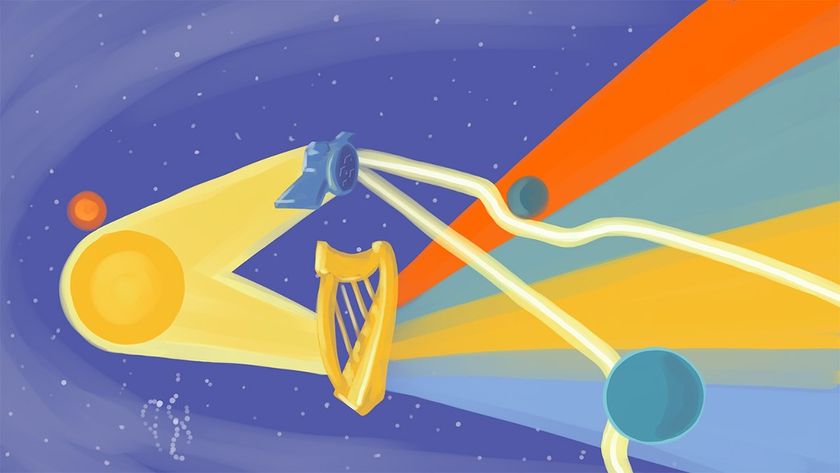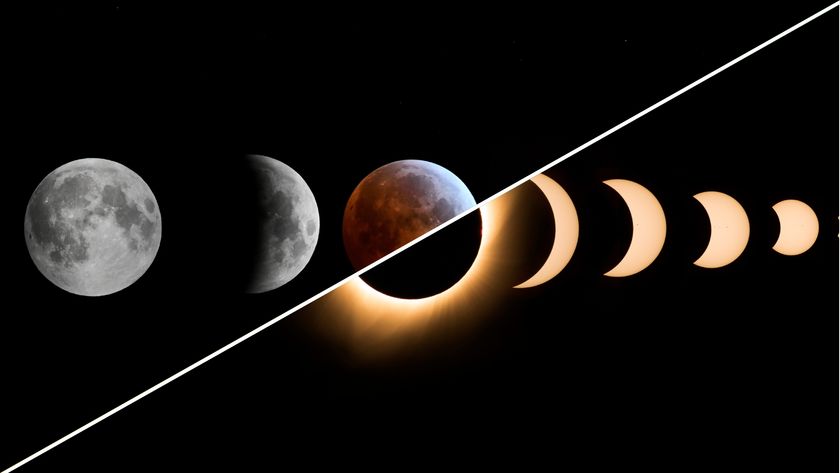The brightest planets in March's night sky: How to see them (and when)
Remarkable views of Venus are available this month.
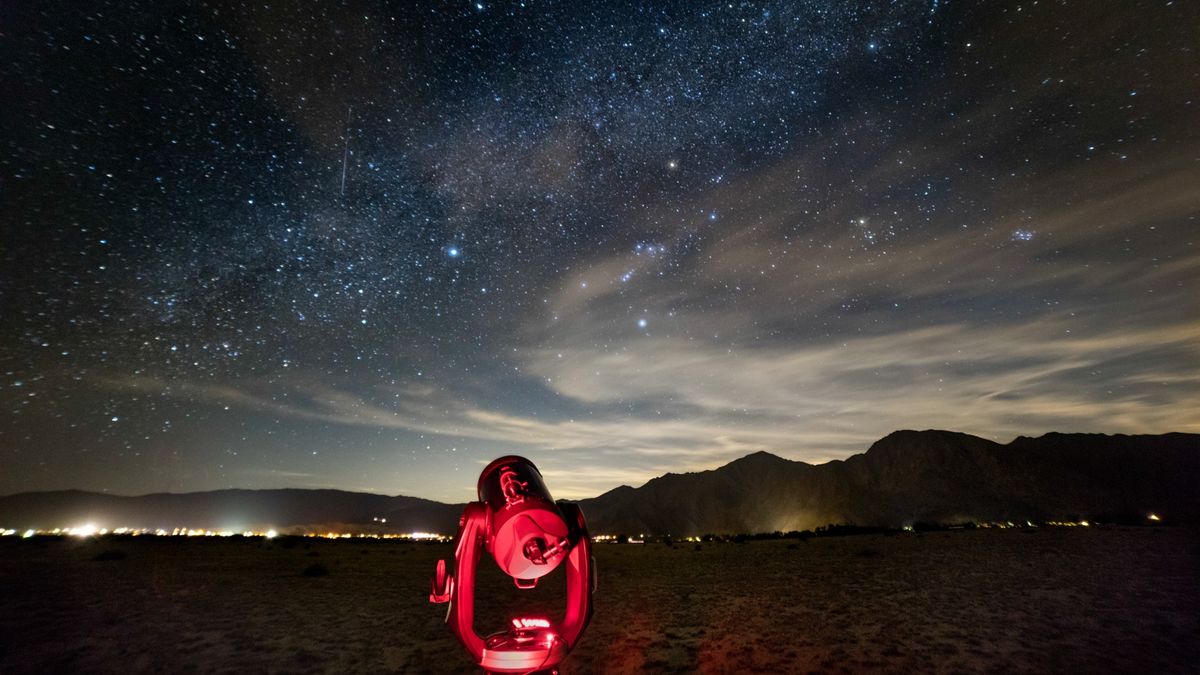
The first two weeks of March provide a great opportunity to sight four bright naked-eye planets in the early evening sky.
Low toward the west blazes Venus, which serves as a convenient celestial landmark to make a sighting of Mercury which will be hovering not far from it. Mercury puts on its best evening apparition of 2025 for Northern Hemisphere observers during these two weeks. Venus will plummet dramatically toward its inferior conjunction on March 22, when it passes 8.4 degrees north of the sun. For a few days around this date, we can try spotting Venus in bright twilight both immediately before sunrise and right after sunset. It rapidly zooms into the morning sky, reaching an angular distance of 15 degrees from the sun by month's end.
Meanwhile, glowing brilliantly, well up in the southern and western sky is Jupiter. Mars, accompanied by its stellar companions Pollux and Castor, climbs almost overhead a couple of hours after sunset and continues to noticeably dim as it pulls away from Earth. The only planet that is out of the viewing loop this month is Saturn, which is too close to the sun to be seen, reaching solar conjunction on March 12. Earth will pass through the plane of Saturn's ring system on March 23, at which time the rings theoretically disappear. Unfortunately, Saturn will be only 10-degrees from the sun at this time so observation of a ringless Saturn is not possible, at least not just yet.
Related: Night sky, March 2025: What you can see tonight [maps]
Read more: Best telescopes for seeing planets in 2025
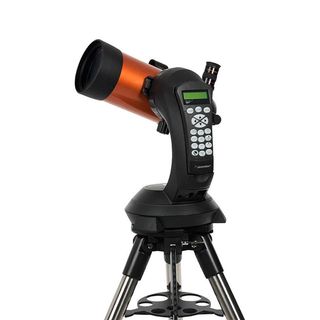
Want to see planets up close in the night sky? The Celestron NexStar 4SE is ideal for beginners wanting quality, reliable and quick views of celestial objects. For a more in-depth look at our Celestron NexStar 4SE review.
In our schedule, remember that when measuring the angular separation between two celestial objects, your clenched fist held at arm's length measures roughly 10 degrees. Here, we present a schedule below which provides some of the best planet viewing times as well directing you as to where to look to see them.
SPECIAL NOTE: Daylight Saving Time returns on this second Sunday in March. Except in the states of Arizona and Hawaii, and the Canadian province of Saskatchewan, clocks are to be moved forward one hour at 2:00 a.m. The mnemonic is: "Spring forward, Fall back."
Be sure to check out our best telescopes for viewing planets guide and our more general guides for the best binoculars and the best telescopes. If you're interested in taking your own impressive skywatching images, we have recommendations for the best cameras for astrophotography and the best lenses for astrophotography.
The sun
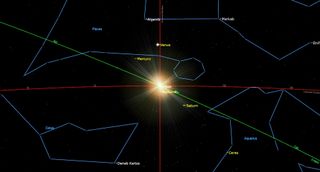
The sun reaches the March equinox at 5:01 a.m. Eastern Daylight Time on March 20. This is when it crosses the equator heading northward. This moment marks the change of seasons: the beginning of spring in the Northern Hemisphere and fall in the Southern.
Mercury
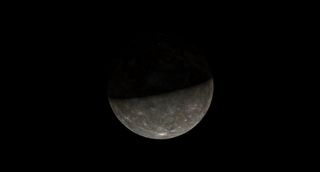
Mercury reaches greatest elongation, 18 degrees east of the sun on the evening of March 8, appearing almost directly above that place on the western horizon where the sun set. In mid-twilight, about 45 minutes after sunset from latitude 40 degrees north, Mercury will stand 9 degrees above the horizon nearly due west, and 7 degrees to the lower left of Venus. Mercury will set just after twilight ends on this date; its magnitude is -0.3. But Mercury fades very rapidly thereafter. By the 12th it will have dimmed to magnitude +0.7 and just four days later its magnitude is +1.9, certainly too faint for it to be seen in bright twilight without optical aid.
On the evening of March 1, there will come an opportunity to sight both Mercury and Venus near to a lovely waxing crescent moon. Start looking a half-hour after sunset, low toward the western horizon for the slender lunar sliver. About 10 degrees below and slightly to its right will be Mercury, shining at magnitude -1.0, while 7 degrees to the upper right of the moon will be Venus, dazzling as always at magnitude -4.8. On March 24, Mercury arrives at inferior conjunction and enters the morning sky.
Venus
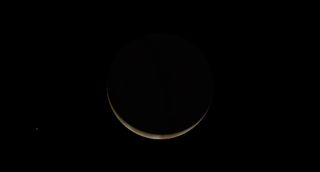
Venus begins March gleaming high above the western horizon at dusk. (It's 23 degrees up a half hour after sunset for observers around 40 degrees north latitude.) But Venus plummets out of the evening sky in the next few weeks. By March 6 Venus is 19 degrees high a half hour after sunset, and that is reduced to just 5 degrees by March 16. Venus passes directly north of the sun on March 20 and reaches inferior conjunction, passing the sun's position along the ecliptic, on March 22. And Venus is closest to the sun in the sky (8.4 degrees apart) just a few hours after that.
Nonetheless, remarkable views of Venus are available this month. Only near inferior conjunction is Venus's big, thin crescent visible through steadily supported binoculars — and even possibly without optical aid by a few exceptionally keen-eyed observers. And only every 8 years, when Venus is far north of the sun at inferior conjunction, can Northern Hemisphere observers see the planet at dawn and dusk on the same day. Venus starts rising just before the sun (at latitude 40 degrees north) as early as March 12. On March 20, Venus is about 5 degrees above the horizon both at sunrise and sunset. By the 24th, Venus is already 2 degrees above the eastern horizon a half hour before sunrise and on March 31, it will be 6 degrees high.
Mars
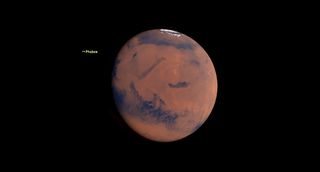
Mars resembles a golden orange point near to the "Twins Stars" of Gemini, Pollux and Castor. Mars crosses the meridian about three hours after sunset on March 1st and one hour after sundown on the 31st. It passes nearly overhead for observers in the United States (except Alaska). This month Mars fades sharply from magnitude -0.3 (brighter than Arcturus) to +0.4 (equal to Procyon), as its distance grows from 81 to 106 million miles (130 to 170 million km). Compare Mars to Betelgeuse. Which is redder? Only a fairly large telescope with good optics on a good night is likely to show much detail on Mars.
Jupiter

Jupiter treks beyond Aldebaran and the Hyades in March, appearing more than 2/3 of the way up in the southern sky at dusk on the 1st and still halfway up in the west at dusk on March 31. This behemoth world dims from magnitude -2.3 to -2.1 during this month, and its apparent diameter diminishes in size by about 8 percent. On the evening of March 5, as darkness falls, take note of the moon sitting about 8 degrees to the upper right of Jupiter.
Saturn
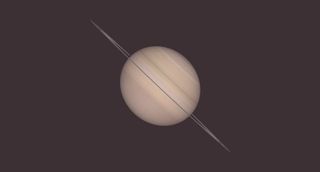
Saturn passes through conjunction with the sun on March 12, and stays lost in the glare of sunrise for the rest of the month. On the 23rd, its famous rings will be turned edge-on to Earth for the first time since 2009, so that when it emerges into view in the morning sky next month, it will appear ringless through most telescopes.
Joe Rao serves as an instructor and guest lecturer at New York's Hayden Planetarium. He writes about astronomy for Natural History magazine, the Farmers' Almanac and other publications.
Editor's Note: If you get a great photo of any of the planets and would like to share it with Space.com's readers, send your photo(s), comments, and your name and location to spacephotos@space.com.
Join our Space Forums to keep talking space on the latest missions, night sky and more! And if you have a news tip, correction or comment, let us know at: community@space.com.
Get the Space.com Newsletter
Breaking space news, the latest updates on rocket launches, skywatching events and more!

Joe Rao is Space.com's skywatching columnist, as well as a veteran meteorologist and eclipse chaser who also serves as an instructor and guest lecturer at New York's Hayden Planetarium. He writes about astronomy for Natural History magazine, Sky & Telescope and other publications. Joe is an 8-time Emmy-nominated meteorologist who served the Putnam Valley region of New York for over 21 years. You can find him on Twitter and YouTube tracking lunar and solar eclipses, meteor showers and more. To find out Joe's latest project, visit him on Twitter.
-
rod Good to see in the report Starry Night used for some charts. I use and enjoy very much in my stargazing as well as planet observations and asteroid tracking like 4 Vesta in Cetus now, moving retrograde. In my observation log (MS ACCESS DB), I load up views of the sky from Starry Night into my log entry along with various ephemeris generated that I import into Excel - works very well.Reply


